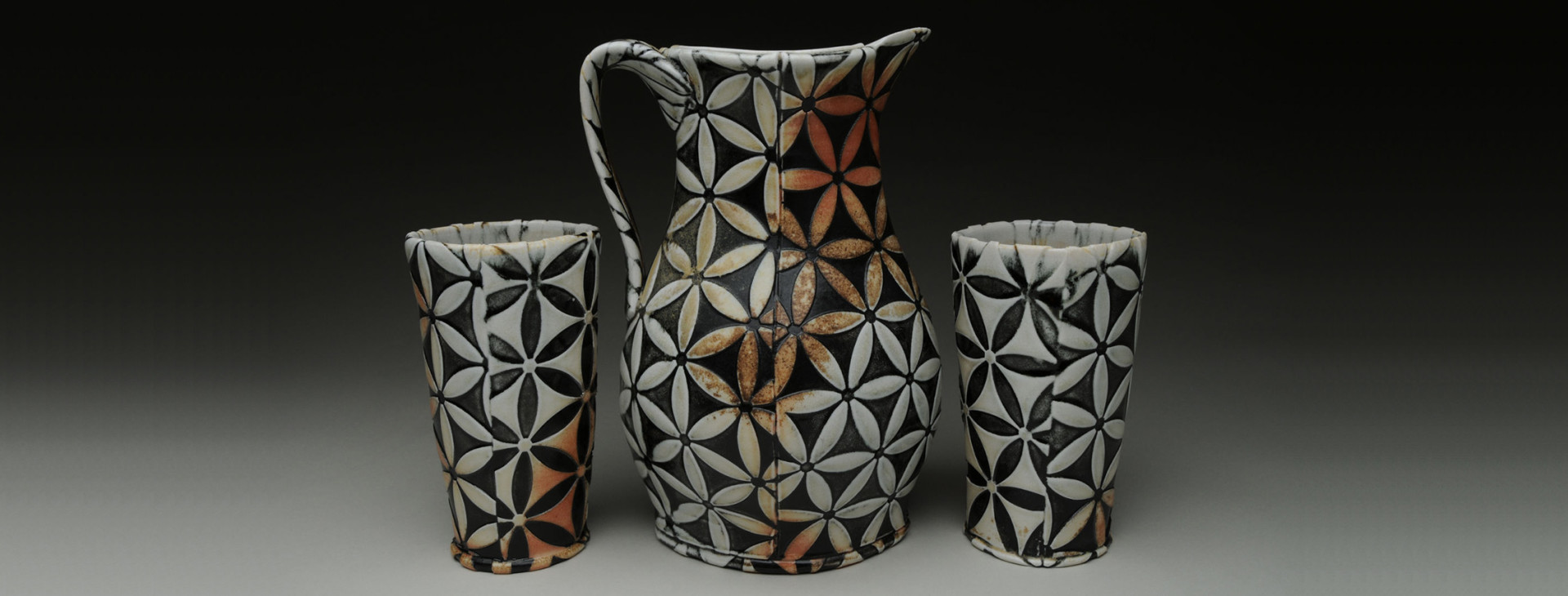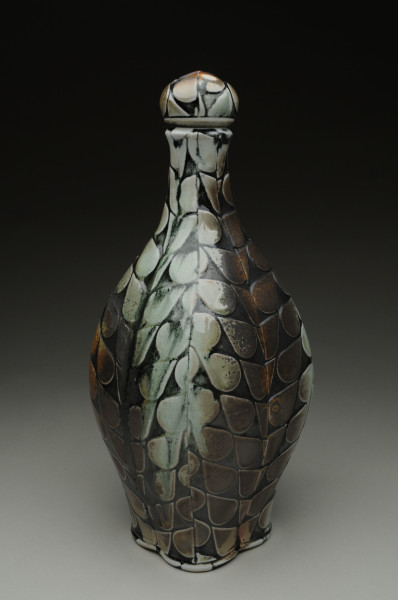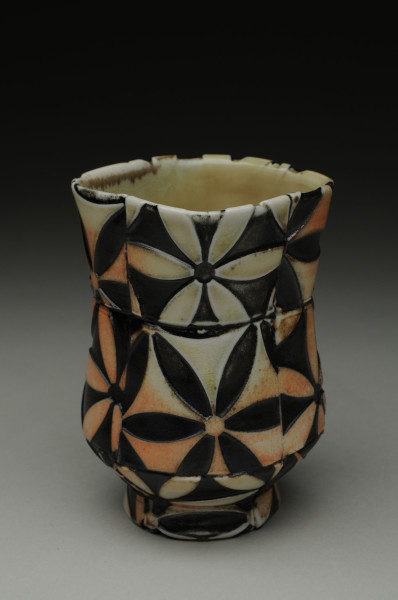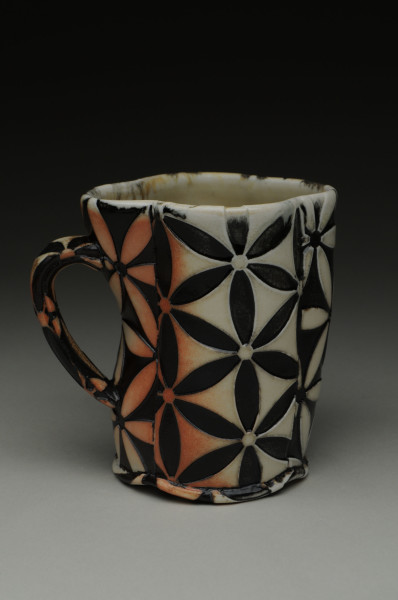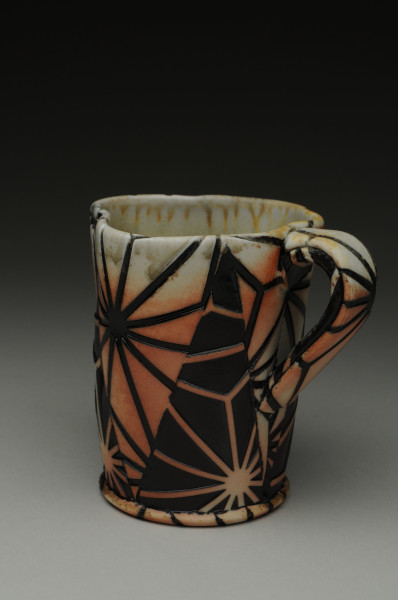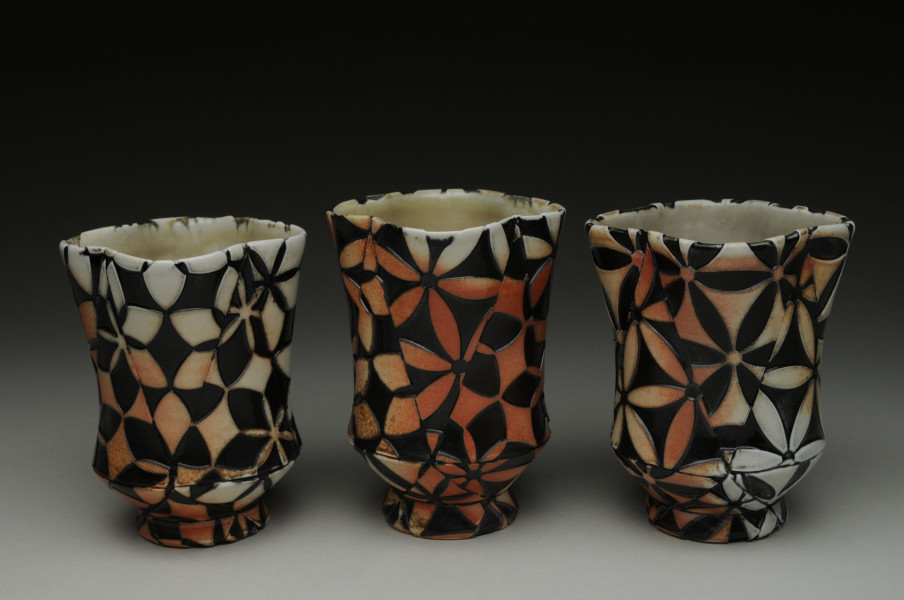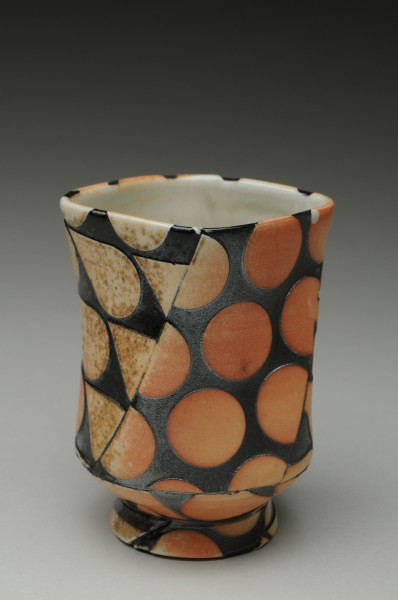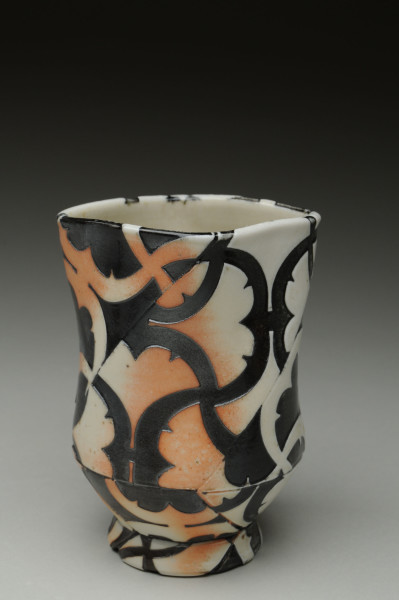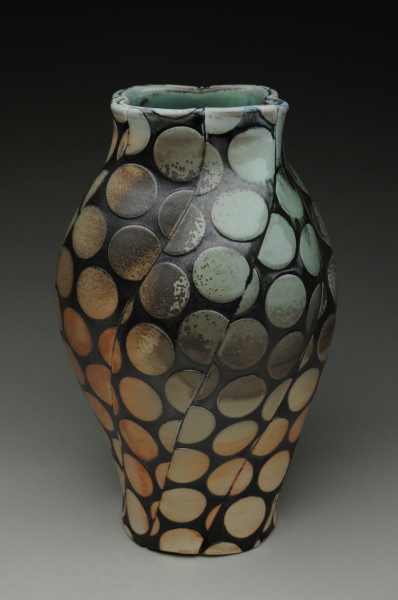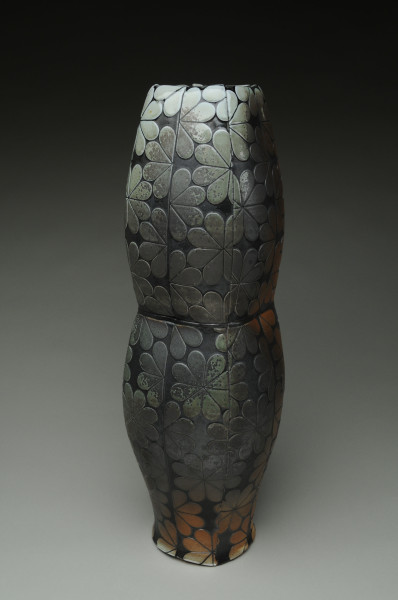
I come from a working class family in rural, southern Indiana. My father is a retired factory worker, who produced “Faultless” casters. His father was a carpenter and a cabinetmaker. My mother worked as a seamstress who learned sewing from her mother. So I have a respect for the trades and working with ones hands. I see my family as my first teachers with their strong work ethic, sense of craftsmanship, and their ingenuity with working with available materials. I had my first experience with ceramics in high school with my teacher, Don Crane, who encouraged me to study at the University of Evansville (U of E).
My undergraduate teacher, Les Miley, at U of E, made me well aware of the references of the body to pottery. Just his use of the words the foot, the lip, the shoulder, the belly taught me how to look at a pot. Jim Lawton, my teacher at The School of the Art Institute of Chicago, compared altering his pots with the process of darting clothes. Instead of altering a
garment around a human body, the vessel is altered around a conceived volume. As do many ceramic artists I see the strong connection between the ceramic vessel and the human body. Les and Jim heightened my awareness of this metaphor in pottery through their teaching.
In my work I reference textile patterns and patterns from other sources and apply them to the “fabric” of the clay. Often these patterns are tessellations, patterns that repeat and go on and on, only to be met with a seam, a lip, a foot and then continue on in the next panel in a different direction. Many of these patterns are nostalgic to me, such as paisleys, plaids, checkerboard, hound’s-tooth, and other loud patterns I was introduced to through 70s clothing. The patterns are created digitally and then wood fired. The idea of new and old process fascinates me, but in the end it is the variation in color and soft flowing kiln atmosphere that blurs the tight edge designs that pleases me most. The firing gives the “fabric” a sense of time and wear like an old work shirt, albeit a fancy work shirt.
